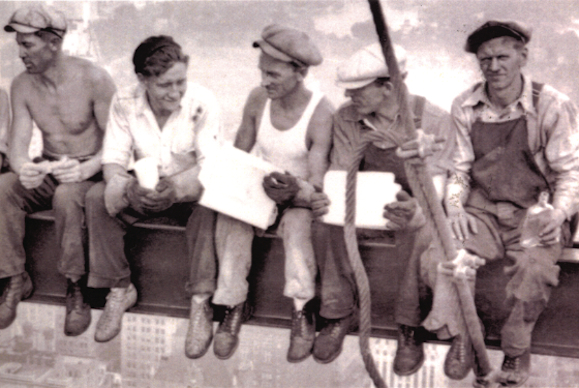Peter Quinn’s latest work is a revealing masterpiece that offers an insightful portrait of Irish America
In an interview with Irish America last year, novelist Peter Quinn was discussing his Bronx Irish upbringing and said: “Words were what mattered in my house. My mother told my brother and me, ‘There’s nothing worth doing in life if it doesn’t leave you with a good story.’”
In two epic, doorstopper-sized historical novels (The Banished Children of Eve and The Hour of the Cat) Quinn has proven that he mastered those lessons about telling good stories. This, however, has tended to overshadow Quinn’s subtle and perceptive body of nonfiction work, which has explored immigration, science, politics and religion for publications such as Irish America as well as The Recorder: The Journal of the American Irish Historical Society, American Heritage, The Catholic Historical Review, The Los Angeles Times and The New York Times. Well, Quinn’s latest book, Looking for Jimmy: A Search for Irish America, combines previously published material (some of it substantially revised) with new work. The result is a revealing masterpiece, one that offers an insightful, centuries-spanning portrait of Irish America.
The best thing to know about Looking for Jimmy is that its author (nodding to fellow novelist William Kennedy) is a proponent of “the muddle theory” of history. In short, Quinn notes in his foreword, no single theory can explain the complexity of the past, Irish-American or otherwise. That fits this book perfectly. In seeming to reach (perhaps too) far and wide for a broad range of topics, Quinn nevertheless manages to say something clearly and distinctly about his Irish–American experience and Irish America in general. The “Jimmy” in the title refers to James Cagney, the charismatic tough guy actor, and to Jimmy Walker, the smooth 1920s New York mayor who had a weakness for showgirls. Quinn sees these archetypes as correctives to the infamous “Paddy” stereotype, which exploded in the middle of the 19th century and endured for well over a century in the popular American imagination. The bulk of Looking for Jimmy is a kind of bridge, navigating a historical path away from the nativist Paddy caricatures to the complexity of the Jimmy figure, which combines criminality and sophistication, ethnic particularity and assimilation. (This does leave women–Bridget, if you will–out of the equation, though Quinn’s chapters certainly do not.)
One of Quinn’s more interesting chapters, “City of God, City of Man,” explores the lives of famous author Edgar Allan Poe and Archbishop “Dagger John” Hughes, who oversaw the construction of New York’s network of Catholic social services, not to mention St. Patrick’s Cathedral on Fifth Avenue.
Both came to New York City in the 1830s and their lives were connected by Fordham University, a seemingly inconsequential connection which, in Quinn’s hands, is used to paint a fascinating portrait of social politics in 19th-century New York. Looking for Jimmy is split into four sections: Politics and Place, Faith and Imagination, Silence and History, and Family and Memory. The last section, filled with vivid, at times unabashedly nostalgic autobiographical sketches allows Quinn to bring the personal and historical together. Quinn’s dad worked as an engineer but attended law school at night, eventually going into politics where he was elected a congressman and later became a judge.
“I heard about the civil service from my father. Over and over,” Quinn wryly observes in one of the many chapters which provide insight not just into the Quinn home, but household Irish-American politics from the era before World War II, when Quinn’s dad was working. Quinn brilliantly combines the personal and political in a more contemporary (and never published) piece called “The Bronx is Burning,” about changes which ravaged Quinn’s native Bronx by the 1970s.
Indeed, the fact that settings in Looking for Jimmy swerve from a Bronx courthouse to gala events where poetic speeches are presented (Quinn himself was a speechwriter for governors Hugh Carey and Mario Cuomo) serves to capture something critical about the Irish-American experience. Along the way, Quinn shares much of what he’s observed, not to mention read, conveying strong convictions with humor and humility.
Looking for Jimmy might also serve as an apt introduction for Quinn’s next project, which he has described as a “family memoir.” It will look at the lives and times of his parents, the murder of an uncle and a notorious Depression-era crime: the disappearance of a Tammany Hall loyalist named Judge Joseph Crater, a crime which was never solved. As Peter Quinn continues to explore his own and America’s past, readers can surely expect to learn a little bit about themselves.
($26.95 / 283 pages / Overlook) ♦


Leave a Reply